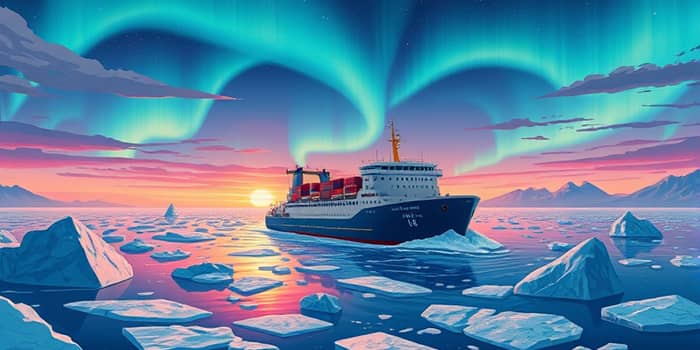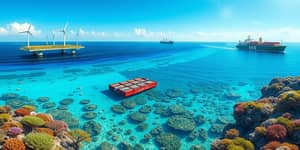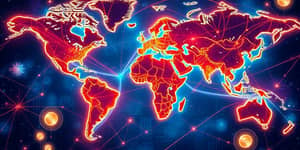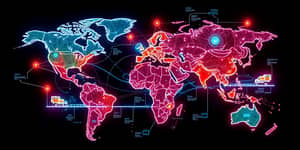
The Arctic, once a remote and forbidding frontier, is emerging as a vital corridor for global trade. As ice recedes and infrastructure develops, the Northern Sea Route (NSR) is drawing increasing attention from shipping magnates, governments, and environmental watchdogs alike.
In 2025 alone, vessel applications surged by 50%, signaling a profound shift in how commerce may flow between Asia and Europe. Yet this new waterway carries both thrilling promise and severe risk.
The NSR can shorten Asia–Europe transit times by up to ten days and cut distance by 30–35% compared to the Suez Canal. This unprecedented route efficiency has attracted Russian carriers like Sovcomflot and ambitious Chinese operators such as NewNew Shipping.
Meanwhile, South Korea eyes Busan as a future Arctic logistics hub, positioning itself at the epicenter of a budding supply chain network. Conversely, most Western firms have withdrawn, deterred by sanctions and steep compliance costs.
Today, the NSR traffic is dominated by bulk and energy cargos—LNG from Yamal and Arctic LNG 2, oil, and minerals. Container shipping remains limited, though China’s regular service from Shanghai to Arkhangelsk demonstrates early ambition.
Experts forecast that by 2030, roughly 2% of global shipping might traverse the Arctic, rising to 5% by 2050. Bulk carrier tonnage could increase tenfold, and annual oil and gas volumes may reach 40 million tons.
The Arctic is warming faster than any other region, and shipping is complicating the crisis. Black carbon emissions settle on ice, accelerating melt. Oil spills, noise pollution, and invasive species threaten delicate ecosystems and indigenous livelihoods.
Advanced technologies—scrubbers, LNG fuel, particulate filters—can cut black carbon by up to 90%. Yet adoption is uneven, and regulatory gaps remain wide.
Navigation on the NSR is reliably open only from July through November. Beyond that window, only ice-classed vessels or those escorted by nuclear icebreakers can proceed safely.
These challenges confine mainstream container shipping to the sidelines. Only specialized, high-value or time-sensitive cargoes justify the extra expense.
Russia exerts tight control over NSR access, issuing permits and setting transit fees. This authority reinforces a state-aligned corridor, with China as a strategic partner under the “Polar Silk Road.”
Western absence has tilted the balance; European and North American operators face legal and political barriers. The Arctic is becoming an arena of new security considerations, from sovereignty claims to environmental policing.
Most analysts agree the Arctic will remain a niche route for at least the next 10–15 years. Infrastructure investments, regulatory tightening, and climate trajectories will determine whether the NSR expands or stalls.
Balancing economic potential with ecological responsibility is the core challenge. Without strong international agreements and indigenous community involvement, the Arctic’s future as a shipping corridor could become a cautionary tale rather than a triumph.
The Arctic route offers transformative potential: faster deliveries, reduced distances, and new commercial frontiers. Yet the stakes are immense. We stand at a crossroads where ambition must be tempered by stewardship.
By forging innovative partnerships that unite governments, industry, and environmental advocates, we can steer the Northern Sea Route toward sustainable success. The challenge is clear—act now, or risk losing one of the planet’s last great wildernesses.
References













